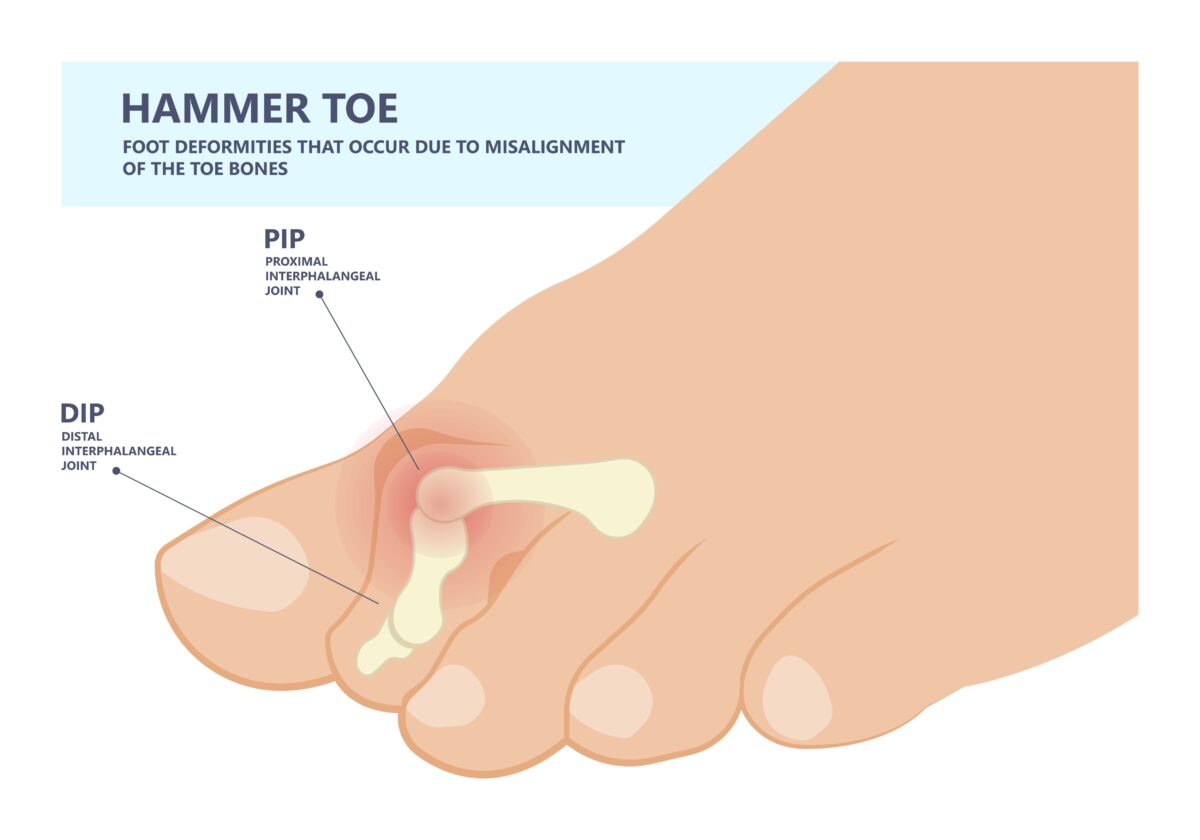Hammertoes
This article does not constitute as medical advice.
If you are experiencing symptoms, contact your doctor or make an appointment.
This article does not constitute as medical advice.
If you are experiencing symptoms, contact your doctor or make an appointment.
Hammertoe is when the second, third, and fourth toes bend at the first joint. As the problem progresses, the joints get rigid, and walking becomes difficult. There are several contributing factors to this condition, such as injury, footwear, and genetics. As a result, those with Hammertoe may experience different levels of severity and discomfort. There are several OTC treatments and prevention methods of Hammertoe. However, in more critical cases, surgery may be necessary. Learn more about Hammertoe here!
There are both at-home and medical treatments for hammertoes depending on the severity. Contact our office if you notice any of the above symptoms of a Hammertoe for easier treatment.
At-Home Treatment / Medical Treatments
